SAP Process Control
Filter By
Browse By
- SAP Analytics and AI
- SAP Application Development and Integration
- All SAP Application Development and Integration
- SAP ABAP
- SAP ABAP Development Tools
- SAP ABAP Test Cockpit
- SAP API Management
- SAP BAPI
- SAP Basis
- SAP BRF
- SAP Business Application Studio
- SAP CMS
- SAP Design Studio
- SAP Development Tools
- SAP DevOps
- SAP EAI
- SAP EDI
- SAP Extension Suite
- SAP Fiori
- SAP Fiori Elements
- SAP Integration Suite
- SAP Low Code Application Development
- SAP Low Code Automation
- SAP Netweaver
- SAP Release Management
- SAP UI5
- SAP Web Application Server
- SAP Web IDE
- SAP Business Process Management
- SAP Center of Excellence
- SAP CIO
- SAP Customer Experience
- SAP Data and Data Management
- All SAP Data and Data Management
- SAP BW
- SAP BW/4HANA
- SAP Crystal Reports
- SAP Data Archiving
- SAP Data Center
- SAP Data Governance
- SAP Data Integration
- SAP Data Migration
- SAP Data Quality
- SAP Data Services
- SAP Data Strategy
- SAP Data Visualization
- SAP Data Warehouse Cloud
- SAP DMS
- SAP Document Control
- SAP EIM
- SAP ETL
- SAP ETL Tools
- SAP HANA
- SAP HANA Administration
- SAP HANA Deployment Infrastructure
- SAP HANA Studio
- SAP Master Data
- SAP Master Data Governance
- SAP MDM
- SAP Enterprise Architect
- SAP Enterprise Asset Management
- SAP ERP
- SAP Finance
- All SAP Finance
- SAP Accounting
- SAP AR AP
- SAP Asset Accounting
- SAP Billing Systems
- SAP BPC
- SAP BRIM
- SAP Cash Management
- SAP Central Finance
- SAP Controlling
- SAP COPA
- SAP Cost Center Accounting
- SAP Currency Risk
- SAP e-invoicing
- SAP FICO
- SAP Finance Automation
- SAP Advanced Financial Closing
- SAP Financial Consolidation
- SAP Financial Planning
- SAP FX Risk
- SAP General Ledger
- SAP Global Tax Management
- SAP Hyperion
- SAP Order to Cash
- SAP Payment Processing
- SAP Profitability Analysis
- SAP Rebate Management
- SAP S/4HANA Finance
- SAP SWIFT Compliance
- SAP Treasury Management
- SAP Universal Journal
- SAP Governance Risk and Compliance
- SAP Human Capital Management
- SAP Intelligent Technologies
- SAP Platform and Technology
- All SAP Platform and Technology
- SAP Business Technology Platform
- SAP Cloud
- SAP Cloud Connector
- SAP Cloud Integration Platform
- SAP Cloud Migration
- SAP Cloud Platform
- SAP Cloud Providers
- SAP Cloud Strategy
- SAP Digital Signature
- SAP Container Platform
- SAP HANA Enterprise Cloud
- SAP Digital Asset Management
- SAP Smart Forms
- SAP HEC
- SAP Digital Integration Hub
- SAP Hyperscalers
- SAP Infrastructure
- SAP Messaging
- SAP Quality and Testing
- SAP Security
- SAP Spend Management
- SAP Supply Chain Management
- All SAP Supply Chain Management
- SAP APO
- SAP Asset Management
- SAP Business Network
- SAP Digital Manufacturing Cloud
- SAP Digital Twin
- SAP EWM
- SAP IBP
- SAP Inventory Management
- SAP Label Printing
- SAP Logistics
- SAP Manufacturing
- SAP Manufacturing Automation
- SAP MES
- SAP MII
- SAP MM
- SAP MRO
- SAP MRP
- SAP Order Management
- SAP Plant Maintenance
- SAP PLM
- SAP Production Planning
- SAP S&OP
- SAP SD
- SAP SPM
- SAP Supply Chain Planning
- SAP Track and Trace
- SAP Transportation Management
- SAP System Administration
What is SAP Process Control?
Companies need to ensure their activities are carried out following board-level directives and internal policies while complying with applicable regulations. That’s where internal controls come into play, and process control is a method that companies use to streamline and automate the monitoring of business processes. SAP Process Control, part of the SAP GRC suite, is one tool that many SAP customers use to ensure their business is operating in an efficient and compliant manner.
What is SAP Process Control?
Companies need to ensure their activities are carried out following board-level directives and internal policies while complying with applicable regulations. That’s where internal controls come into play, and process control is a method that companies use to streamline and automate the monitoring of business processes. SAP Process Control, part of the SAP GRC suite, is one tool that many SAP customers use to ensure their business is operating in an efficient and compliant manner.
SAP Process Control and similar tools offer the following capabilities, among others:
- Continuous controls monitoring (CCM), which automates the monitoring of process data.
- Single source of process control data, including internal procedures and compliance policies
- Business objective and risk alignment with controls
- Automated workflows and notifications for issue response
- Internal controls evaluation
Process Control is largely manual without a targeted solution. Automation with the help of technology enables faster response to efficiency and compliance issues, while reducing workload for GRC teams.
There are many vendors that provide services and products around process control. For example, Appsian Security’ssolutions offer attribute-based controls monitoring, continuous monitoring, and real-time process analytics. System integrators such as Capgemini, Deloitte, and Accenture assist customers with establishing process controls policies and implementing SAP Process Control and other software.
Key Considerations for SAPinsiders:
- CCM automation is an appealing piece of SAP Process Control for many SAP customers. For example, as part of an SAP Process Control implementation, Eli Lilly utilized CCM to help track the company’s controlled activities. This has helped increase transparency and efficiency in the controls process.
- Business partners need to be involved in SAP Process Control. Get out in front of the process with your business partners so you can inform and co-create, making them aware of control considerations that will impact their decisions. Challenge your current processes and leverage technology and external expertise to support adoption and behavior change. Asking questions like “what is your biggest pain point” and “how do we benchmark against our peers” is important.
- Hershey is using process control to measure process and adoption rates during its phased SAP S/4HANA implementation. This phased approach allows the company to understand what extent GRC is being leveraged. Using SAP Process Control, rationalization of manual controls is targeted at 35% and control automation is expected to increase from 20% to over 50%.
431 results
-

 Premium
Premium
The Starting Point for Authorization in Change Request Management
Reading time: 25 mins
ManagerDiscover best practices on how to authorize users of SAP Solution Manager Change Request Management (ChaRM) with user roles. Learn about the biggest pitfalls you may encounter and precautions you should take when you set up authorizations. Key Concept In Change Request Management (ChaRM), users can use actions to perform status changes and execute changes...…
-

 Premium
Premium
Use Subsequent Activation of Open Item Management for Better Control Over Your SAP General Ledger Account
Reading time: 7 mins
Sometimes business users need to convert a non-open item managed account into an open item managed account and convert the existing line items of the account into open items. This step is sometimes required by businesses to have better control over their SAP General Ledger accounts. It helps in controlling and clearing the transactions. SAP...…
-

 Premium
Premium
What Can ACE Do for You? Lessons Learned from a Recent Implementation
Reading time: 28 mins
Learn how CRM Access Control Engine (ACE) provides CRM users with just the data they need, reducing the time spent maintaining data. Also learn how to set up business rules in ACE with minimal ABAP programming. Finally, take a look at lessons learned from a recent ACE implementation. Key Concept Access Control Engine (ACE) determines...…
-
-

 Premium
Premium
Facilitate the Data Exchange Between Headquarters and Subsidiaries with SAP In-House Cash
Reading time: 17 mins
Become familiar with the most important business configuration settings of SAP In-House Cash. Get a step-by-step introduction to how to prepare both the subsidiary systems and the in-house cash center for the key business processes of SAP In-House Cash. Understand the setup of the principal master data for SAP In-House Cash. Key Concept SAP In-House...…
-

 Premium
Premium
How to Use Data Management Techniques to Turbo-Charge SD Processes
Reading time: 12 mins
Learn how to enhance the performance of your sales and distribution processes along with your SAP ERP system by adopting effective data management tips and tricks based on performance- driven configuration settings in rebate processing, sales document flow, and collective processing runs. Key Concept Data avoidance, data deletion, and data archiving are data management techniques...…
-

 Premium
Premium
Ensure Accurate Inventory Valuation by Using Actual Costing Functionality
Reading time: 57 mins
Break through a common misconception about how the actual cost is updated as the standard price in the material ledger and actual costing. Understand the process of how you can use the functionality to compute the actual cost of the material and carry out accurate inventory valuation at the end of the period. By following...…
-

 Premium
Premium
Streamline Your Capital Investment Process with Appropriation Requests
Reading time: 14 mins
Learn how appropriation requests in SAP Investment Management can help you plan cash flows and carry out a cost benefit analysis. Key Concept Most SAP users use SAP Investment Management to plan investment programs. In SAP Investment Management, the focus is on the initial capital outlays. The SAP Investment Management programs are then linked to...…
-
-

 Premium
Premium
Capture Usage Variances and Automatically Assign Them to Your POs
Reading time: 11 mins
You can use the distribution of usage variances function to simplify data collection for variance analysis and the valuation of inventory at actual costs, and avoid recording each transaction on its own. An example shows the steps and takes you through the process of what to do in Customizing. Key Concept Distribution of usage variances...…
-

 Premium
Premium
Create a Web Interface for the BEx Map
Reading time: 8 mins
Learn how to use the Web Application Designer to create templates for interactive maps. By using only two settings, you can provide three levels of interactivity. In “Set Up the BEx Map for Flawless Function in Five Easy Steps,” I showed you how to set up the data for using the BEx Map.1 Now I’ll...…
-

 Premium
Premium
When to Use Organization Rules and Reporting in Compliance Calibrator
Reading time: 12 mins
Find out if your company should use organization rules for eliminating false positives from reports. Key Concept You use organization rules to provide an additional layer of segregation of duties (SoD) analysis to remove false positives that may result from segregating based on organization levels. You perform this analysis on top of your core Compliance...…
Become a Member
Unlimited access to thousands of resources for SAP-specific expertise that can only be found here.
Become a Partner
Access exclusive SAP insights, expert marketing strategies, and high-value services including research reports, webinars, and buyers' guides, all designed to boost your campaign ROI by up to 50% within the SAP ecosystem.
Upcoming Events
Related Vendors
Your request has been successfully sent


